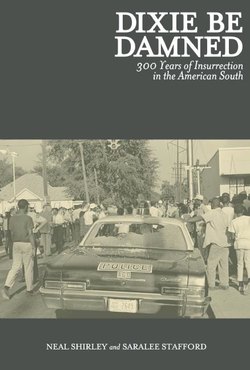Читать книгу Dixie Be Damned - Neal Shirley - Страница 6
На сайте Литреса книга снята с продажи.
ОглавлениеThe “discovery” of the New World breathed new life into a European social system that was facing crisis and rebellion at home. Peasant uprisings across Europe in the fifteenth century took advantage of labor shortages, heretical religious ideas, and communal structures to eventually achieve a level of autonomy and self-sufficiency unknown to urban laborers centuries later. The existence of the commons—whether the fen, the field, or the forest—in which peasants and artisans could survive in hard times, proved a fundamental obstacle to the expansion of capitalism in Europe. The consequent destruction of these commons through the enclosures and expropriation of the fifteenth and sixteenth centuries opened the door to capitalist expansion and colonization, and forced entire classes of European laborers into intense poverty and despair. It was this class of newly proletarianized peoples that built and maintained the infrastructure of early capitalism’s cities, ports, and colonies. These processes also resulted in new waves of radicalism among these dispossessed peoples, from the antinomian and the Anabaptist to the Levellers and the Diggers, who self-organized to destroy the hedges and fences that enclosed formerly communal lands.
The ripples of these developments were felt beyond Europe to the whole of the Atlantic world, from West Africa to the Caribbean and the Americas. This world was globalized on the terms of slave-traders, merchants, and politicians, but the heavy lifting was done by diverse crews of West African, Indian, and European laborers, prostitutes, domestic workers, field hands, and sailors—“hewers of wood and drawers of water”—who sought every possible opportunity to rebel. Whether one refers to the impressment of sailors, the capture of Indians, indentured servitude, or the later development of chattel slavery, labor under seventeenth and eighteenth century capitalism was predominantly some form of slavery.
This slavery was not initially organized on strictly racial lines: for example, an Irishwoman captured and forced into servitude by English forces might work on the docks alongside a West African Akan man, who himself had once sailed with unpaid men of a half dozen different nationalities. This contributed a global and multi-ethnic character to revolt, whether it was that of the pirates of Bartholomew Roberts who attacked the slave trade of the early 1700s, the diverse characters behind the New York Conspiracy of 1741, or the autonomous fugitive settlement of North Carolina’s Albemarle Sound.
The motley character of these rebellions was particularly terrifying to those in power, and in this fear one can find the origins of the racial hierarchies we encounter today. Everything from legislation to new divisions of labor—in particular the role of poor Europeans as police or overseers—sought to divide, break apart, and isolate the threatening cross-cultural alliances that formed in the daily lives of the dispossessed. This process kicked into full gear in the late-seventeenth and early-eighteenth centuries, sparked by events like Virginia’s Bacon’s Rebellion of 1676, which began as a ruling-class-led coup but grew out of control into an all-out war by English and African bond-laborers on the plantation elite. The word “white” did not even appear in legal records until 1691, but by the early-nineteenth century an entire code of racial categories, divisions of labor, scientific doctrine, and social conduct had evolved, which sought to shut out any possibility of meaningful, cross-ethnic solidarity.
This is not to diminish the importance of the mostly uniracial rebellions against southern chattel slavery, but to draw attention to the moments in which these racial codes were either not yet fully concretized or were simply thrown aside. The combative maroons of the Great Dismal Swamp, and the fugitive settlement that preceded them, present an illustrative example of the interaction between changing divisions of labor, the origins of whiteness, the development of a rebellious pan-African identity, and the solidarity of the criminal and the propertyless.4
Endnotes
4 “Maroon” is a generic word used to refer to a fugitive from slavery, typically one who joined with other fugitives to live in some kind of autonomous settlement. Those who escaped North to Canada as individuals are rarely called maroons, for example, while the large settlements of escaped slaves who banded together in the Great Dismal, Caribbean, and Central and South America usually are. Most historians in the United States have only used this term to refer to African laborers, but in other parts of the world it can refer equally to enslaved Native or even English bond-laborers.
